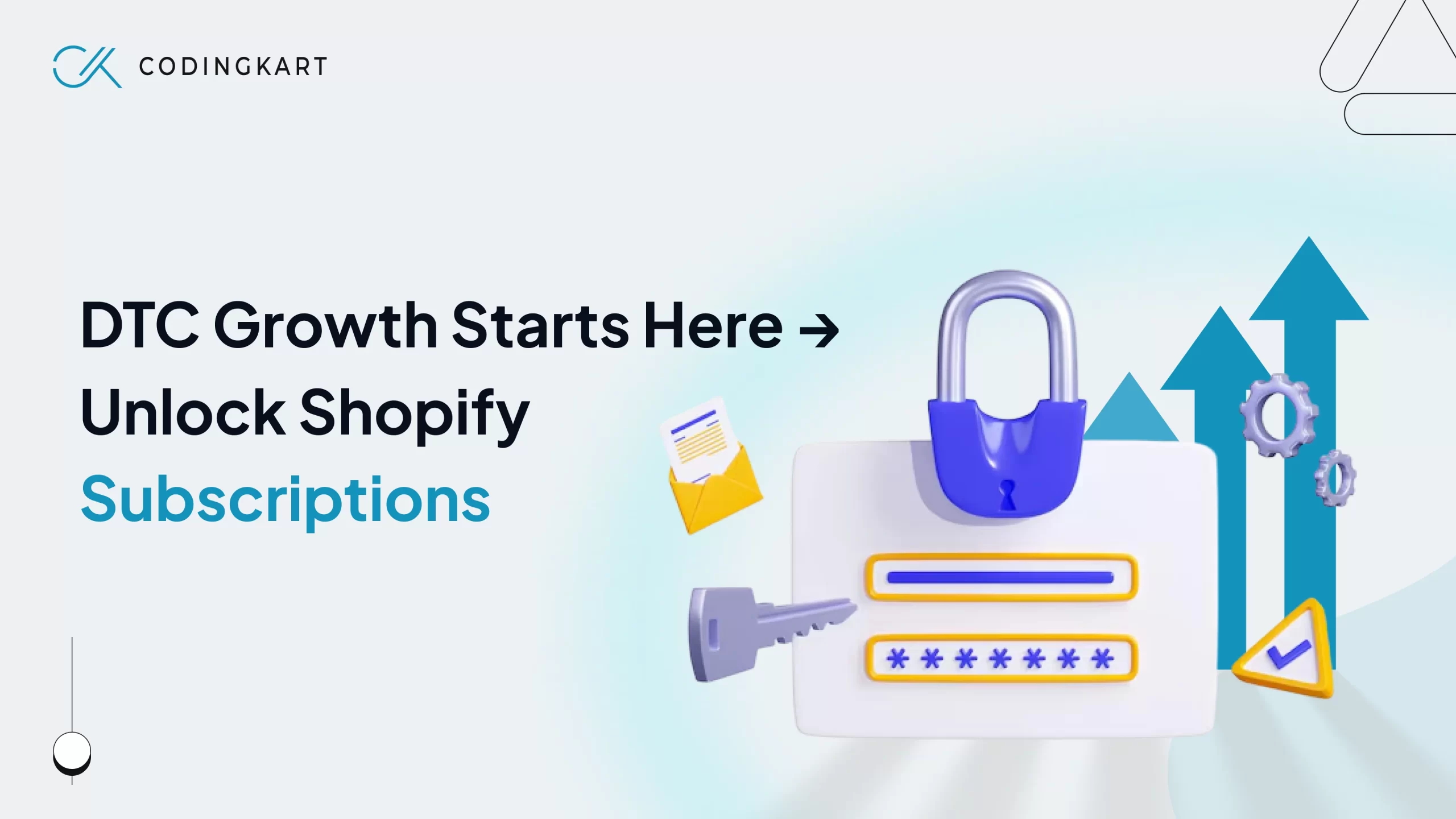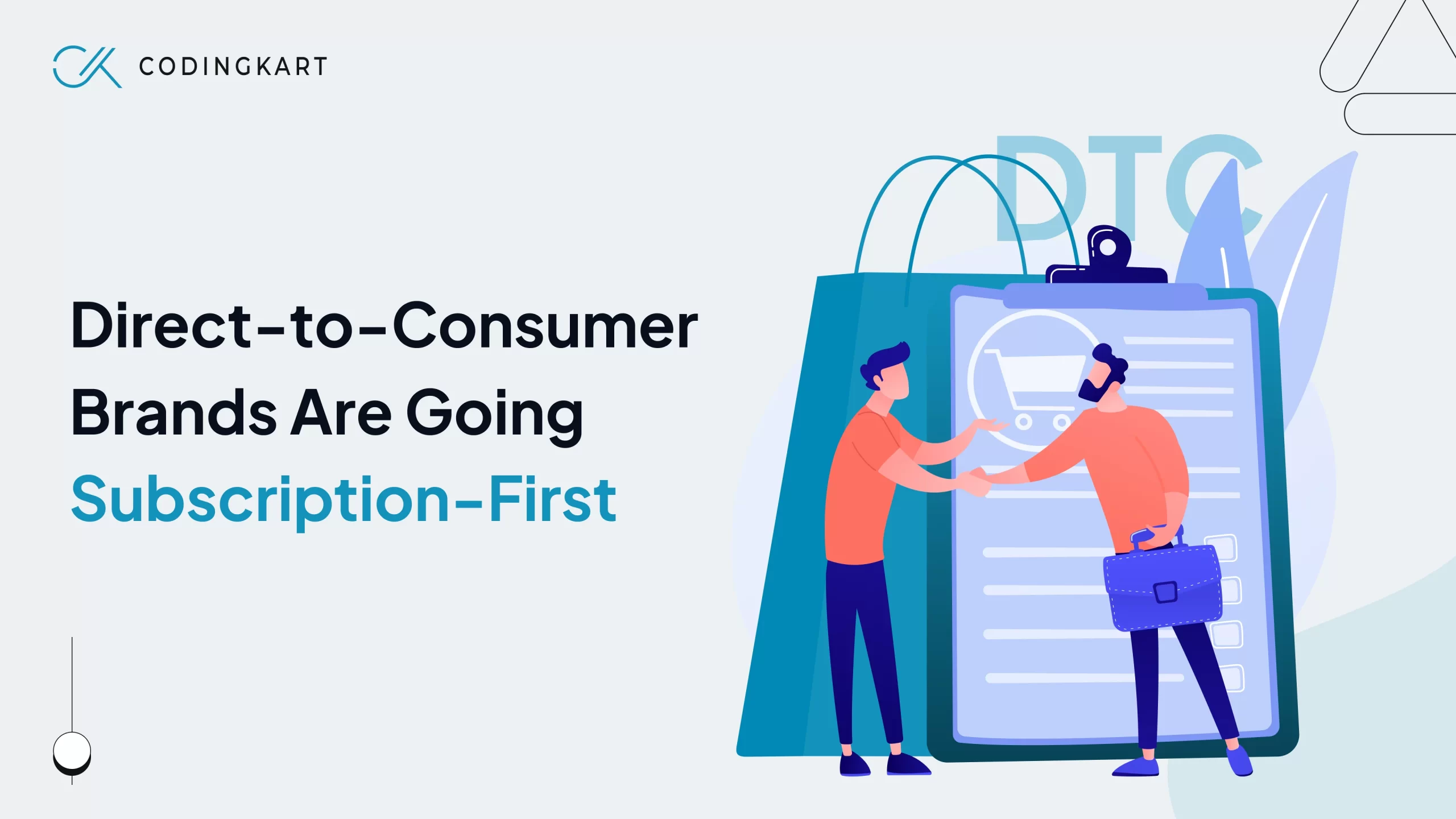June 19, 202512 min read

Get in touch with our team to discuss your Shopify development needs.
Lets Talk
In today’s evolving direct-to-consumer (DTC) landscape, one-time transactions are rapidly being replaced by long-term customer relationships powered by recurring revenue models.
From coffee and cosmetics to pet care and personal wellness, consumers are gravitating toward brands that offer convenience, consistency, and personalization. These are hallmarks of a strong product subscription experience.
This shift isn’t just a trend—it’s a strategic evolution. DTC brands embracing Shopify subscriptions are gaining predictable revenue and deeper engagement. As consumer expectations rise, subscription-first brands need platforms that can scale seamlessly and adapt quickly.
In fact, the report by Precedence Research states, that global subscription e-commerce market is valued at USD 20.58 billion in 2025, and is projected to grow to approximately USD 46.05 billion by 2034.
This rapid growth reflects the rising demand for subscription models across industries, especially within the Shopify ecosystem, where merchants are increasingly adopting subscription solutions to build recurring revenue.
Whether you are setting up a Shopify product subscription for the first time or refining your Shopify subscription management strategy, understanding this shift is crucial to staying competitive in the modern direct-to-consumer (DTC) economy.
In the competitive DTC space, brands that overlook Shopify subscriptions risk more than just missed revenue—they risk losing relevance. As consumer buying habits increasingly lean toward convenience and predictability, failing to offer a Shopify product subscription means you’re leaving money on the table and creating friction in the customer journey.
Without a well-structured subscription model, DTC brands struggle with inconsistent cash flow, low repeat purchase rates, and limited customer insights.
In contrast, brands that leverage the Shopify Subscriptions API and apply Shopify subscription optimization can create flexible, personalized subscription experiences that boost retention and reduce churn.
Here is a breakdown of what you are leaving behind without a Shopify subscription strategy:
Without recurring orders, brands face unpredictable cash flow and revenue volatility.
A lack of Shopify product subscription options makes it harder to turn one-time buyers into loyal customers.
Without subscriptions, you’re constantly spending to acquire new customers instead of retaining existing ones.
Subscription models generate deeper insights into customer habits, preferences, and lifetime value.
Without proper churn prevention strategies, you’re more likely to lose customers after just one purchase.
No Shopify subscription optimization means you’re missing chances to personalize, upsell, or pause subscriptions to reduce cancellations.
Without Shopify customer retention tools, your brand becomes easier to forget and replace.
Brands not using the Shopify Subscriptions API miss out on flexibility and automation in scaling subscription-first experiences.
Without retention-focused Shopify development, it’s harder to lift your Shopify retention rate and grow sustainably.

While Shopify is a powerful platform, many DTC teams still encounter significant hurdles when building and scaling their Shopify subscriptions strategy. From technical limitations to retention issues, here are the key challenges brands face:
While Shopify provides a strong foundation, overcoming these challenges requires strategic use of tools like the Shopify Subscriptions API, smart Shopify subscription optimization, and custom retention-focused Shopify development. Addressing these pain points is essential to improve Shopify’s retention rate and build a high-performance subscription engine.
A successful Shopify subscription brand doesn’t just offer recurring orders—it delivers a seamless, value-driven experience at every stage of the customer journey. These brands go beyond the basics of Shopify subscriptions, building a subscription engine that’s optimized for scale, retention, and loyalty.
Here’s a breakdown of what a winning Shopify subscription brand looks like:
Scaling Shopify subscriptions successfully requires more than just enabling recurring billing. It demands strategic planning, cross-functional collaboration, and the right tech stack.
Here’s how merchants and technical teams can lay a strong foundation for growth:
Many Shopify merchants focus on getting subscribers through the door, but forget that retention starts with how the subscription is set up. A smart, user-friendly subscription flow not only drives initial sign-ups but also plays a critical role in minimizing friction and preventing cancellations.
If you want to boost Shopify customer retention and improve your Shopify retention rate, your setup strategy must be just as thoughtful as your product offering.
Here’s how a smarter subscription setup can help you reduce churn and drive long-term success with Shopify subscription services:
All in all, a well-thought-out subscription setup isn’t just a backend task—it’s your first line of defense against churn. By prioritizing smart design and customer flexibility, you lay the foundation for high-performing Shopify subscriptions that retain, engage, and grow.
Launching a successful subscription brand on Shopify in 2025 is not just about offering recurring products—it’s about building a streamlined, customer-first experience from day one. Whether you are a founder, marketer, or developer, setting the right foundation with the right tools and strategies can turn a basic idea into a scalable growth engine.
Here’s how to get started the right way with Shopify subscriptions:
Starting your Shopify subscriptions brand with a smart setup, optimized tools, and customer-first design will position you to grow faster, retain longer, and scale sustainably in 2025 and beyond.
Don’t Let Subscription Be an Afterthought.
As DTC brands look ahead to the next phase of ecommerce, subscriptions are no longer optional—they’re foundational.
The brands that win in 2025 and beyond will be those that treat subscriptions not as a side feature but as a core strategy for growth, retention, and recurring revenue.
By prioritizing flexible Shopify subscription services, focusing on customer experience, and investing in long-term Shopify subscription optimization, forward-thinking brands will unlock higher LTV, stronger loyalty, and deeper engagement.
Don’t let your subscription strategy be an afterthought—because the DTC leaders of tomorrow are building it into everything they do today.
Partner with Codingkart, a trusted Shopify Plus agency specializing in custom subscription development.
Let’s build a scalable, retention-focused subscription model that drives real growth.
Book a consultation call now.
Answer: Subscriptions offer predictable revenue, improved customer lifetime value (LTV), and stronger brand loyalty. For DTC brands, this model helps create recurring relationships and increases purchase frequency, making it a key growth engine in today’s competitive eCommerce landscape.
Answer: Codingkart specializes in Shopify subscription development, offering tailored solutions like custom subscription flows, integration with Stripe or PayPal, and advanced logic for pause/skip/trial features. We use Shopify’s native APIs or platforms like Recharge and Skio based on your business needs.
Answer: Subscription setup focuses on the initial sign-up experience—product bundling, delivery options, and checkout flows. Retention workflows come after that, helping you minimize churn through email triggers, loyalty incentives, dunning management, and flexible subscription controls. Codingkart builds for both long-term performance.
Answer: Yes. Codingkart offers Shopify subscription API integration services, enabling seamless sync with CRMs (like Klaviyo, HubSpot), email platforms, and analytics tools, giving you full control over customer lifecycle management.
Answer: With deep Shopify Plus expertise and a strong focus on DTC growth, Codingkart delivers scalable, conversion-focused subscription systems. From strategy to implementation and retention optimization, we ensure your subscription model drives real results.
June 19, 202512 min read
Introduction to Subscription Shift in DTC Commerce In today’s evolving direct-to-consumer (DTC) landscape, one-time transactions are rapidly being replaced by long-term customer relationships powered by ...Read More
June 18, 20258 min read
Introduction: The Rise of Subscription Beauty Brands In recent years, the beauty industry has undergone a significant transformation with the rise of subscription-based business models. ...Read More
June 16, 202510 min read
Why Scaling eCommerce Brands Need a Platform Shift on Shopify As eCommerce brands grow, the limitations of basic platforms—or even standard Shopify plans—can quickly become ...Read More